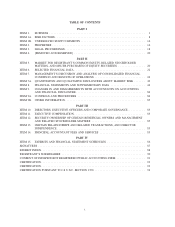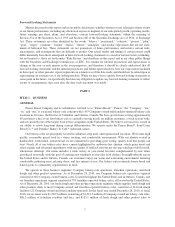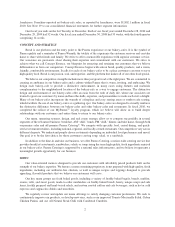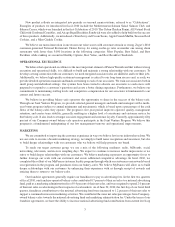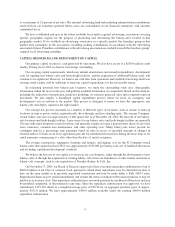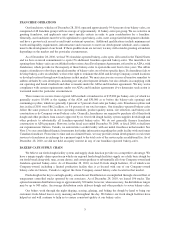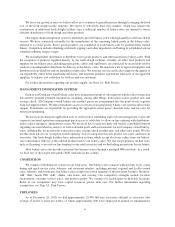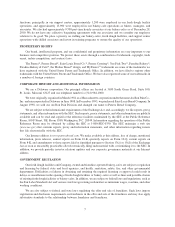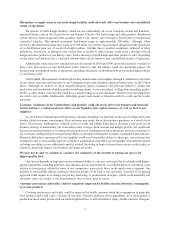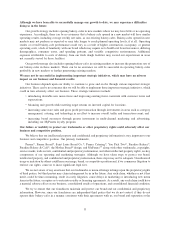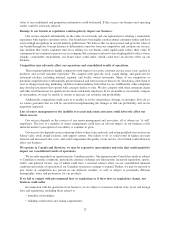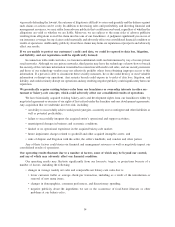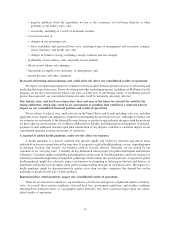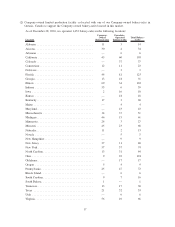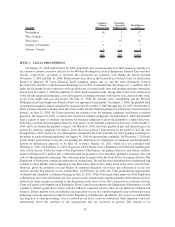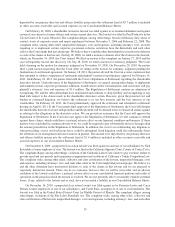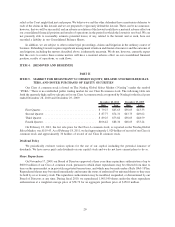Panera Bread 2010 Annual Report Download - page 17
Download and view the complete annual report
Please find page 17 of the 2010 Panera Bread annual report below. You can navigate through the pages in the report by either clicking on the pages listed below, or by using the keyword search tool below to find specific information within the annual report.or nutritional content could cause customers to shift their preferences. For example, past outbreaks of E. coli in
certain beef food products caused consumers to avoid certain products and restaurant chains. In addition, outbreaks
of salmonella in certain peanuts and peanut butter products, jalapenos and spinach caused consumers to avoid such
products. These problems, other food-borne illnesses (such as hepatitis A or trichinosis), and injuries caused by
food tampering have in the past, and could in the future, adversely affect the price and availability of affected
ingredients and cause customers to shift their preferences, particularly if we choose to pass any higher ingredient
costs along to consumers. Negative publicity concerning particular food products may adversely affect demand for
our products and could cause an increase in our food costs as a result of potentially irregular supply of such products
and a decrease in customer traffic to our bakery-cafes.
Our ability to increase our revenues and operating profits could be adversely affected if we are unable
to execute our growth strategy or achieve sufficient returns on invested capital in bakery-cafe locations.
Our growth strategy primarily consists of new market development and further penetration of existing markets,
both by us and our franchisees, including the selection of sites which will achieve targeted returns on invested
capital. The success of this strategy depends on numerous factors that are not completely controlled by us or involve
risks that may impact the development, or timing of development, of our bakery-cafes. Our ability to grow the
number of bakery-cafes successfully will depend on a number of factors, including:
• general economic conditions;
• obstacles to hiring and training qualified operating personnel in the local market;
• identification and availability of suitable locations for new bakery-cafes on acceptable terms, including costs
and appropriate delivery distances from our fresh dough facilities;
• competition for restaurant sites;
• variations in the number and timing of bakery-cafe openings as compared to our construction schedule;
• management of the costs of construction of bakery-cafes, particularly factors outside our control, such as the
timing of delivery of a leased location by the landlord;
• our ability to take advantage of perceived opportunities in a softening commercial real estate market;
• securing required governmental approvals and permits and complying with applicable zoning, land use, and
environmental regulations; and
• impact of inclement weather, natural disasters, and other acts of nature.
Our growth strategy in part depends on continued development by our franchisees. If our franchisees do
not continue to successfully finance and open new bakery-cafes, our business could be adversely
affected.
Our growth strategy includes continued development of bakery-cafes through franchising. At December 28,
2010, approximately 54.4 percent of our bakery-cafes were operated by franchisees (791 franchise-operated
bakery-cafes out of a total of 1,453 bakery-cafes system-wide). The opening and success of bakery-cafes by
franchisees depends on a number of factors, including those identified above, as well as the availability of suitable
franchise candidates and the financial and other resources of our franchisees such as our franchisees’ ability to
receive financing from banks and other financial institutions, which may become more challenging in the current
economic environment.
Additionally, our consolidated results of operations include revenues derived from royalties on sales from, and
revenues from sales by our fresh dough facilities to, franchise-operated bakery-cafes. As a result, our growth
expectations and revenues could be negatively impacted by a material downturn in sales at and to franchise-
operated bakery-cafes or if one or more key franchisees becomes insolvent and unable to pay us royalties.
10


